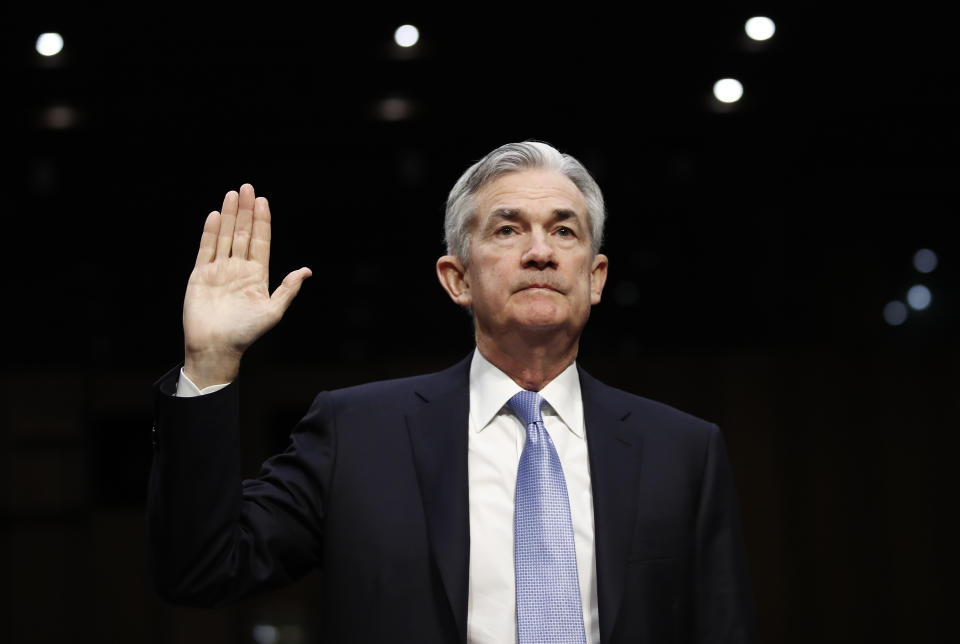GDP and Beige Book — What you need to know on Wednesday
As investors keep an eye focused on the tax reform drama in Washington, D.C., Wednesday will bring markets a look back at the third quarter and a look ahead at the next Federal Reserve meeting.
On the economic schedule, the second estimate of third quarter GDP will be released in the morning with economists looking for the report to show the economy grew at an annualized rate of 3.2%.
In the afternoon, we’ll also get the latest Beige Book from the Federal Reserve, a collection of economic anecdotes from each of the Fed’s 12 districts, which also helps inform the basis of the discussion at the next FOMC meeting, which begins in two weeks.

On the earnings side, notable results expected on Wednesday include Tiffany (TIF) and PVH Corp. (PVH), parent company of Calvin Klein and Tommy Hilfiger.
Washington, D.C., of course, will also remain a focus with the Senate’s Budget Committee overcoming a procedural vote on Tuesday, helping clear the way for a potential vote on the current tax plan as early as Thursday.
Investors will also be mulling over testimony from Federal Reserve chair nominee Jay Powell, who testified before the Senate Banking Committee on Tuesday in his first comments to lawmakers since being nominated to replace current Fed Chair Janet Yellen back in November.
“Based on [Powell’s] comments [on Tuesday], we see no reason to change our forecast that the Fed will raise rates in December and then a further four times next year,” said economist at Capital Economics on Tuesday.
Confidence now, a warning later
On Tuesday, The Conference Board’s November reading on consumer confidence showed that confidence in the economy among the consumer class remains at a 17-year high.
“Consumers are entering the holiday season in very high spirits and foresee the economy expanding at a healthy pace into the early months of 2018,” said Lynn Franco, direct of economist indicators at The Conference Board.
This data also squares with the reading we got last Wednesday from the University of Michigan on consumer sentiment as well as the trend we’ve seen since the election of President Donald Trump — whether it is businesses or consumers, confidence across the economy abounds.

Couple confident consumers with bullish stock market outlooks from Wall Street, tax cuts that appear close to the finish line, and a newfound mania around the price of bitcoin, and the goods times appear to be rolling.
But in a note to clients previewing the U.S. economy for 2018, economists at J.P. Morgan had a warning for markets and investors — after next year, things get tougher.
“Resource markets are tightening, most visibly in the rapidly declining unemployment rate. Yet there are reasons to believe the economy has a fair degree of runway before getting into worrisome territory,” the firm writes.
J.P. Morgan’s team, led by Michael Feroli, notes that wages are rising but doing so from a depressed point, keeping a lid on inflation. And with inflation expectations below-average, the firm sees a rip higher in inflation — and in turn, the Fed raising interest rates — as still unlikely. At least next year.
“It’s not obvious the same can be said when looking ahead to 2019 and 2020,” J.P. Morgan writes.
Which brings us back to another theme we’ve been hitting recent days — certainty.
Everywhere you look in markets there are confident forecasts that 2018 will look a lot like 2017. Economic growth will continue, stock gains will still be enjoyed, and a year of wrestling with whether the economic expansion, one of the longest since World War II, is ending will be pushed out into the future.
And a 2018 forecast that really warns investors about 2019 and beyond is just another example of why these appear to be the “good old days,” and that any bad economic outcomes are something to worry about tomorrow.
—
Myles Udland is a writer at Yahoo Finance. Follow him on Twitter @MylesUdland
Read more from Myles here:


